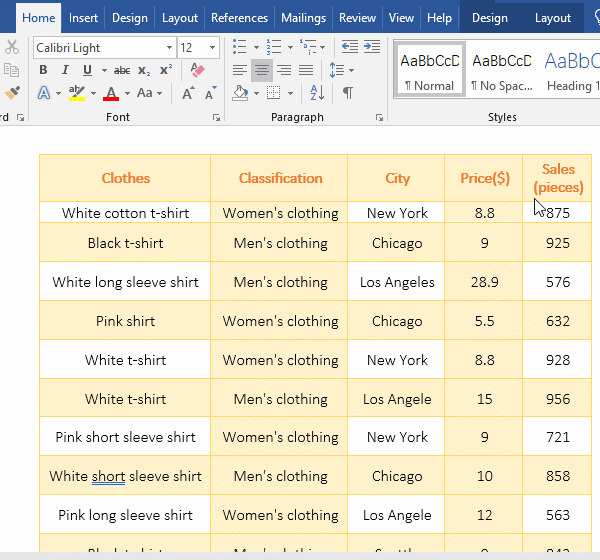

- #REDUCE ROW HEIGHT IN WORD 2010 HOW TO#
- #REDUCE ROW HEIGHT IN WORD 2010 MAC#
- #REDUCE ROW HEIGHT IN WORD 2010 WINDOWS#

If you turn off that setting AND specify some hor & vert settings, your image is far less likely to move. Keep in mind that by default, an image moves if the anchor point moves. The default settings seldom do what I want, so I almost always make changes in this tab. The Position tab gives you many options for specifying the horizontal and vertical alignment, and allows you to modify options related to the anchor point. Right-click the picture and choose the “Size and Position…” flyout to bring up the dialog box. Tom WS: You can get a lot more control by using options in the Layout dialog. Microsoft, this default setting earns you a score of -10 it’s not the typically required setting and it doesn’t make good sense as a default. If you have images in your document and if you need to change their wrapping so that you can work with them, click the image, click Picture Tools > Format and from the Wrap Text dropdown list, select Square or another setting (other than Inline with Text). This makes it easy to move the image around the screen and position it exactly where you want it to be. Once you’ve done this, when you insert an image into a document it will be inserted with the setting that you determined. Locate the Cut, Copy and Paste options and set the Insert/Paste Pictures As setting to Square, Tight, Behind Text, In Front Of Text, Through or Top And Bottom – in fact anything other than the default Inline With Text. To change the way that images are inserted into Microsoft Word documents to make it a one-step process that never needs to be tweaked, in Word 2010 choose File > Options and select the Advanced tab. This leaves hapless new users with absolutely no clue that this feature is available or needed much less where to find and set it. This means that they cannot be moved or easily positioned on the page without you needing to first change the image’s wrap settings. Unfortunately, Word 2010 is no exception and, by default, images are inserted into a new Word document as inline images.
#REDUCE ROW HEIGHT IN WORD 2010 MAC#
#REDUCE ROW HEIGHT IN WORD 2010 WINDOWS#
Print a List of Files in a Windows Folder.Left Arrow to Get to the Bottom of a Word Document - Mac Only Stupidity.Copy Excel Formulas Without Updating References.Move a Paragraph Up or Down in Microsoft Word (Mac).
#REDUCE ROW HEIGHT IN WORD 2010 HOW TO#
Clean Up Time! How to find and remove big files.SAVE yourself daily FRUSTRATION - Start Task Manager with one click!.Excel Templates To Make Marketing Easier.Let there be light! Testing out the amazing Benq ScreenBar.Just remember that whatever you multiply the height by, you need to divide the width by (always starting at 100%). Depending on the font, you may need to play with the sizing just a bit to get the desired effect, but this approach should work in all instances. You now have a font that is the same width as its base font but is the desired height. Using the Scale control, specify a scaling of 80%.The Character Spacing tab of the Font dialog box. (On the Home tab of the ribbon, click the small icon at the bottom-right of the Font group, then click the Advanced tab.) (See Figure 1.)įigure 1. Display the Advanced tab of the Font dialog box.Now suppose that you want your font to be 25 percent taller, but not to have the width changed. There is a way around this disparity, however: You can play with the font size and adjust the horizontal scale negatively.įor instance, let's say that you have a text selection that is formatted using 12-point type. It is interesting to note that Word does not provide any corresponding method to change the vertical scale of a font without affecting the width.

Using the control changes only the horizontal scale the vertical height of the font remains exactly the same. Word makes it easy to change the horizontal scale of a font, by using the Scale control on the Advanced tab of the Font dialog box.


 0 kommentar(er)
0 kommentar(er)
